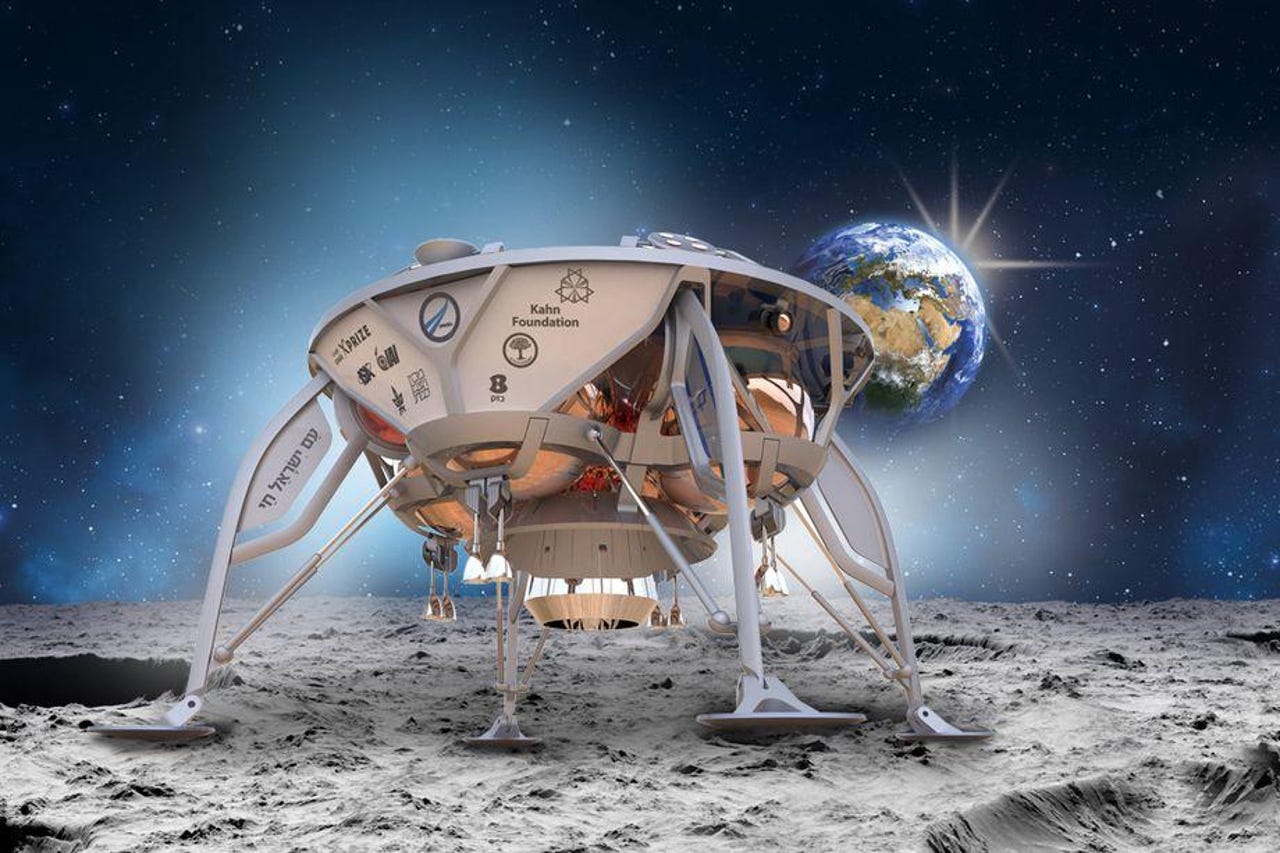Lunar lander crashes into moon. Did an archive of Earth books survive?


A team of experts is trying to ascertain whether a special collection of digitized books sent into space on a disc archive is intact after an unmanned moon landing went off course last week. Israel company SpaceIL was attempting to become the first private company to successfully touch down on the moon, but its Beresheet spacecraft lost power on descent and crashed into the surface.
A finalist for Google's Lunar Xprize, SpaceIL helped Israel become just the fourth country to put an object on the moon, after the U.S., the former Soviet Union, and China. The mission carried a price tag of $100M, relative pennies compared to previous lander attempts.
The Beresheet lander was carrying a payload that included instruments to conduct several scientific experiments. It also held the so-called Lunar Library, a disc containing a 30 million page archive created to serve as "a backup of planet Earth," according to the Arch Mission Foundation, which spearheaded the project. The content in the Lunar Library included the English version of Wikipedia, a library of 30,000 books, and the Long Now Foundation Rosetta and PanLex datasets, which is a key to 5000 languages with 1.5 billion cross-language translations.
Following the crash, the Arch Mission Foundation has put a crack team together to try and locate the library and ascertain whether it survived.
"Based on the durability of the payload desk and estimated impact," an Arch Mission spokesman told me, "we believe the Lunar Library to be intact. Now the hunt is on to find where exactly on the moon it landed. The Arch Mission Foundation is putting together a team of experts -- everyone from Stephen Wolfram to a world-class treasure hunter -- to help locate the disc."
If the disc is intact, it means the Beresheet's mission was a technical success in at least delivering the first commercial payload to the Moon.
"We have either installed the first library on the moon, or we have installed the first archaeological ruins of early human attempts to build a library on the moon," says Nova Spivack, Co-Founder, Arch Mission Foundation.
The disc on which the library is printed is robust and was designed to be crash resistant, giving hope that it survived the more than 300 MPH uncontrolled vertical descent. The disk is a 100 gram object made of nickel and epoxy resin and sheathed in Kapton tape, which remains stable across a variety of temperatures and has been used to temporarily repair air leaks on spacecraft.
According to the Arch Mission, it's too early to come to any conclusions, but early signs are encouraging.
"Every indication thus far suggests that the Lunar Library is intact on the Moon, and we appreciate the number of partners that have emerged to help us determine the effect of the impact and begin finding the Lunar Library," said Spivack. "The delivery of the Lunar Library to the surface of the Moon is also an historic achievement and success for the SpaceIL team. We cannot thank them enough for their collaboration and we look forward to our next mission with them in the future."
The analysis team includes top experts from the Arch Mission Advisory Board, as well as others with relevant expertise, to help find the Lunar Libary's location. The group includes Stephen Wolfram, Michael Paul, Bruce Ha, Eric Knight, Shaun Whitehead, Nova Spivack, and others.